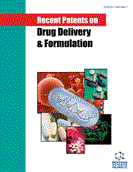Abstract
Patients suffering from the severe complications associated with both insulin- (IDDM) and non-insulin-dependent diabetes mellitus (NIDDM): nephropathy, retinopathy, neuropathy, and atherosclerosis are still largely left without a prospect of an efficient treatment. Chronic hyperglycaemia, the primary clinical manifestation of diabetes, is associated with development of certain of the diabetic complications. The accelerated formation of advanced glycation end-products (AGEs) due to elevated glycemia has repeatedly been reported as a central pathogenic factor in the development of diabetic microvascular complications. Glucose and α-dicarbonyl compounds chemically attach to proteins and nucleic acids without the aid of enzymes. Initially, chemically reversible Schiff base and Amadori product adducts form in proportion to glucose concentration.
The major biological effects of excessive nonenzymatic glycosylation are leading to increased free radical production and compromised free radical inhibitory and scavenger systems, inactivation of enzymes; inhibition of regulatory molecule binding; crosslinking of glycosylated proteins and trapping of soluble proteins by glycosylated extracellular matrix (both may progress in the absence of glucose); decreased susceptibility to proteolysis; abnormalities of nucleic acid function; altered macromolecular recognition and endocytosis; and increased immunogenicity.
The discovery of chemical agents that can inhibit deleterious glycation reactions is potentially of great therapeutic benefit to all diabetes-associated pathologies.
This study demonstrates the progress in development of patented carnosine mimetics resistant in formulations to enzymatic hydrolysis with human carnosinases that are acting as a universal form of antioxidant, deglycating and transglycating agents that inhibit sugar-mediated protein cross-linking, chelate or inactivate a number of transition metal ions (including ferrous and copper ions), possess lipid peroxidase type of activity and protection of antioxidant enzymes from inactivation (such as in a case of superoxide dismutase). Carnosine biological mimetics react with methylglyoxal and they are described in this study as a glyoxalase mimetics. The imidazole-containing carnosine biological mimetics can react with a number of deleterious aldehydic products of lipid peroxidation and thereby suppress their toxicity. Carnosine and carcinine can also react with glycated proteins and inhibit advanced glycation end product formation.
These studies indicate a therapeutic role for imidazole-containing antioxidants (non-hydrolized carnosine, carcinine, D-carnosine, ophthalmic prodrug N-acetylcarnosine, leucyl-histidylhidrazide and patented formulations thereof) in therapeutic management strategies for Type 2 Diabetes.
Keywords: Atherosclerosis, carcinine, D-carnosine, diabetes complications, excessive nonenzymatic glycosylation, increased free radical production, leucyl-histidylhidrazide and patented formulations thereof, nephropathy, neuropathy, patented carnosine mimetics resistant to enzymatic hydrolysis with human carnosinases, non-hydrolized carnosine, ophthalmic prodrug N-acetylcarnosine, retinopathy, therapeutic management strategies for Type 2 Diabetes, universal form of antioxidant and transglycating agents.
 58
58














